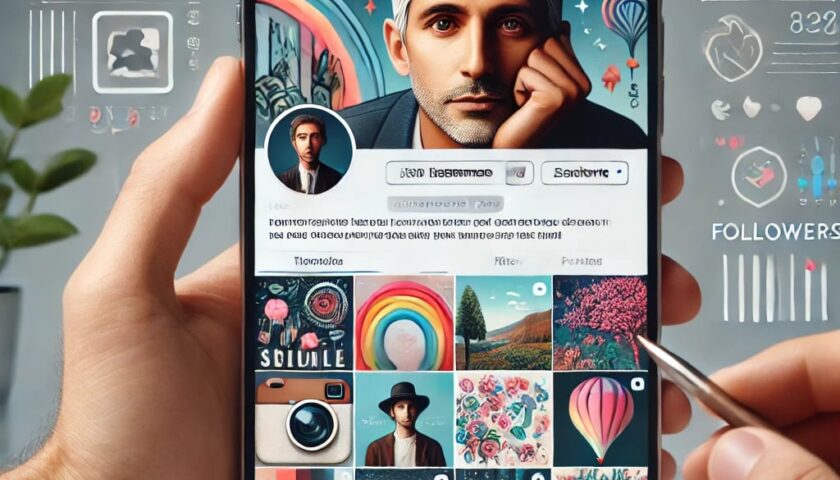In the digital age, industries are continuously evolving by embracing technological advancements, and the restaurant sector is no exception. With changing consumer demands and increasing expectations for convenience and personalization, IoT (Internet of Things) technology has emerged as a key driver of innovation in the dining experience. One such innovation is the “smart menu”—a technological solution that aims to redefine how menus are presented, how orders are processed, and how customers interact with restaurants.
Smart menus powered by IoT sensors represent an exciting shift in the food industry. They offer an improved way to engage customers, manage restaurant operations, and deliver unique and customized dining experiences. By integrating smart technologies into the dining environment, restaurants can leverage data to optimize service and cater to the preferences and needs of their guests.
Introduction to Smart Menus
Smart menus refer to digital or interactive menus that can be accessed and navigated via digital devices such as tablets, smartphones, or specialized kiosks. These menus offer flexibility, a dynamic way to showcase dishes, and the possibility to integrate advanced features like real-time order customization, nutritional information, and payment systems. IoT sensors play a significant role in providing real-time data, making these menus more adaptive and personalized
How IoT Sensors Make Smart Menus Possible
The Internet of Things (IoT) plays a pivotal role in the creation of smart menus. IoT sensors are devices embedded into the restaurant infrastructure that collect, analyze, and share data in real-time over a network. The key feature of these sensors lies in their ability to interact with various systems like the menu’s digital display, customer devices, kitchen appliances, and even payment systems. The application of IoT sensors within smart menus can vastly improve the customer experience while offering significant benefits for restaurant operators. Let’s take a closer look at the specific ways in which IoT sensors enhance smart menus.
What Are Smart Menus?
Smart menus are digital solutions integrated with IoT technology that allow diners to browse, customize, and order food through connected devices. Unlike static printed menus, smart menus utilize IoT sensors to gather real-time data, analyze customer preferences, and offer tailored recommendations.
The Role of IoT Sensors in Smart Menus
1. Enhanced Customer Personalization
IoT sensors monitor customer behavior, such as their browsing history, order patterns, and meal preferences. By analyzing this data, smart menus provide personalized suggestions, making the dining experience more tailored and satisfying.
2. Real-Time Menu Updates
Restaurants often face challenges updating menus to reflect ingredient availability or seasonal dishes. IoT sensors streamline this process by connecting with inventory systems. Smart menus automatically reflect real-time changes, ensuring accurate information for diners.
3. Optimized Ordering Process
With IoT-powered smart menus, diners can order directly from their smartphones or tablets. Sensors communicate with the kitchen to process orders instantly, reducing wait times and human error.
Features That Redefine Dining Experiences
1. Touchless Technology
IoT sensors enable touchless interactions, providing a hygienic solution for ordering. These technologies gained immense popularity during the COVID-19 pandemic and remain a preferred choice for safety-conscious customers.
2. Integrated Nutritional Insights
Smart menus equipped with IoT sensors offer detailed nutritional information for menu items. Diners can easily customize meals based on dietary restrictions or preferences, fostering a health-conscious dining environment.
3. AI Integration
Artificial Intelligence combined with IoT sensors enhances smart menus further. For instance, AI algorithms use sensor data to predict peak hours, adjust inventory, and suggest the best pairings for orders.
Benefits for Businesses
1. Streamlined Operations
IoT sensors bridge the gap between front-end service and back-end operations. Real-time insights enable staff to optimize resources, reduce waste, and improve operational efficiency.
2. Higher Customer Engagement
Interactive smart menus captivate customers, boosting engagement and satisfaction. Customizable dining options foster loyalty and encourage repeat visits.
3. Data-Driven Insights
IoT systems capture valuable analytics such as customer preferences, peak dining times, and popular dishes. Businesses can leverage this data to refine strategies and enhance profitability.
Challenges and Considerations
Despite their advantages, implementing IoT-based smart menus comes with challenges. Concerns about data privacy, integration with existing systems, and initial setup costs require thoughtful consideration. Overcoming these hurdles ensures the long-term success of smart menu solutions.
The Future of Smart Menu
As IoT technology advances, the capabilities of smart menus will only grow. Augmented reality (AR) overlays, voice-command features, and greater AI integration are just the beginning. These developments promise to make dining more intuitive and engaging.
Why Choose Veve Digit?
As a leader in IoT innovations, Veve Digit offers cutting-edge solutions for modernizing the hospitality industry. By harnessing the power of IoT sensors, Veve Digit transforms traditional systems into smart, seamless experiences. Upgrade your business with Veve Digit and stay ahead in the digital age.
Smart menus are more than a trend; they are a glimpse into the future of dining. By leveraging IoT sensors, businesses can offer unmatched convenience, personalization, and efficiency—qualities that resonate with the modern diner. Choose Veve Digit to unlock the full potential of smart menus and redefine how you connect with your customers.
The Future of Smart Menus
The rise of smart menus fueled by IoT sensors is only the beginning of a wider trend in modernizing the restaurant industry. In the future, smart menus will become even more integrated with artificial intelligence, enabling advanced features like predictive analytics for inventory management, more intuitive customer interaction, and fully automated ordering systems.
Additionally, new sensor technologies, such as voice recognition or facial recognition, may play an even greater role in personalizing the customer experience. Imagine walking into your favorite restaurant, having your table preference immediately identified, and receiving personalized menu suggestions based on your past dining history.
With rapid technological advancements and a growing demand for more seamless and customized dining experiences, smart menus and IoT sensors will become indispensable in the modern restaurant ecosystem.
Conclusion: A Future with IoT-Powered Menus
The integration of IoT sensors in smart menus is revolutionizing how restaurants operate and engage with customers. From creating personalized dining experiences and reducing food waste to enhancing efficiency and improving customer satisfaction, IoT is set to transform the future of dining. As the technology continues to evolve, we can expect even more innovations that make dining smarter, faster, and more sustainable.
Smart menus powered by IoT sensors not only elevate the customer experience but also enhance operational efficiency, making them a significant trend in modern dining. The potential of IoT to transform this space will continue to grow, offering restaurant owners a competitive edge and customers a more dynamic dining experience.





